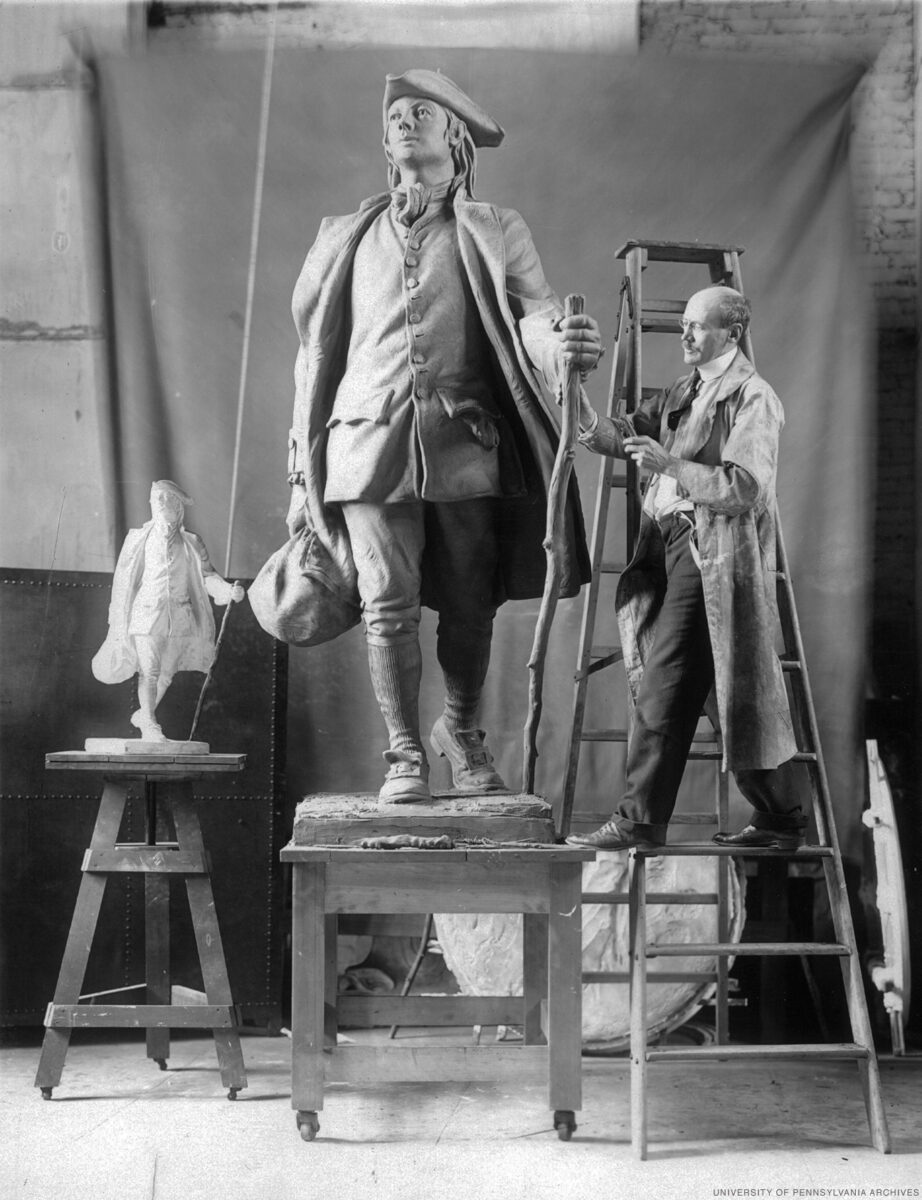
“This statue represents more truly than any other … the spirit and history of America,” proclaimed James M. Beck during the dedication of the Young Franklin statue outside of Penn’s Weightman Hall, on June 16, 1914 (Old Penn, June 20, 1914). Beck, a prominent lawyer and future US solicitor general, spoke at length on why Benjamin Franklin was such an important figure in American history and an appropriate choice for this honor. “Does not this ‘Youthful Franklin’ with his staff in one hand and his meager possession in the other, with his uplifted eyes, alert, vigorous carriage and smiling, resolute face, nobly symbolize the youth of America, as they end their apprenticeship and resolutely face on the threshold of manhood the rude challenge of the world?”
On a more personal level, the Class of 1904, which commissioned the piece, chose to honor Franklin, founder of the University, because no such sculpture yet existed of him on campus (the older statue of Franklin on College Green, originally unveiled at the old US Post Office building at 9th and Chestnut Streets in 1899, did not move to its current location until 1939). And by choosing a depiction of Franklin early in his life, when he first arrived in Philadelphia in 1723, the class hoped that “this memorial shall bring some measure of inspiration and encouragement” to the young students who arrive at Penn, said Layton B. Register C1904, president of the Class of 1904.
The class chose R. Tait McKenzie as the artist for the sculpture and raised $10,000 to build it in time for their 10th reunion. The University designated the day of dedication as Franklin Day and arranged speakers, music, poetry, and an exhibit of Franklin relics on view inside Weightman Hall.
McKenzie, head of the University’s department of physical education and later the J. William White Research Professor Emeritus of Physical Education, had started sculpting out of necessity, when he needed models to use for his anatomy lectures at McGill University in Montreal, where he worked prior to Penn. In addition to being a distinguished professor, he also became quite renowned as an artist. He was drawn to Penn in 1904 by the newly constructed Weightman Hall, and the University gave him a private studio on the top floor to work on his art. It was here that a nude model walked around for a week before McKenzie found a stride suitable for the position of the statue.
Paul Cret, professor of architecture at Penn, created the statue’s base and its surrounding landscaping.
McKenzie died suddenly in 1938 of a heart attack, before he could finish his final project. His ashes are interred at St. Peter’s Episcopal Church in Philadelphia, and his heart, in accordance with his spiritual beliefs, is buried separately in Edinburgh, near his favorite sculpture, The Call.—NP

